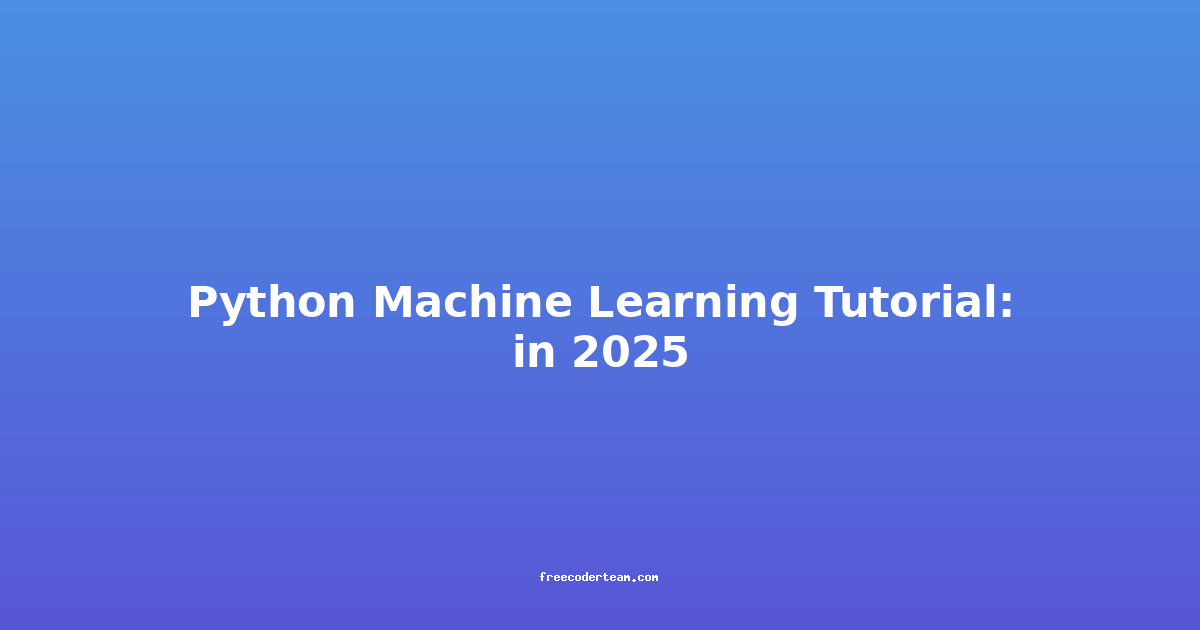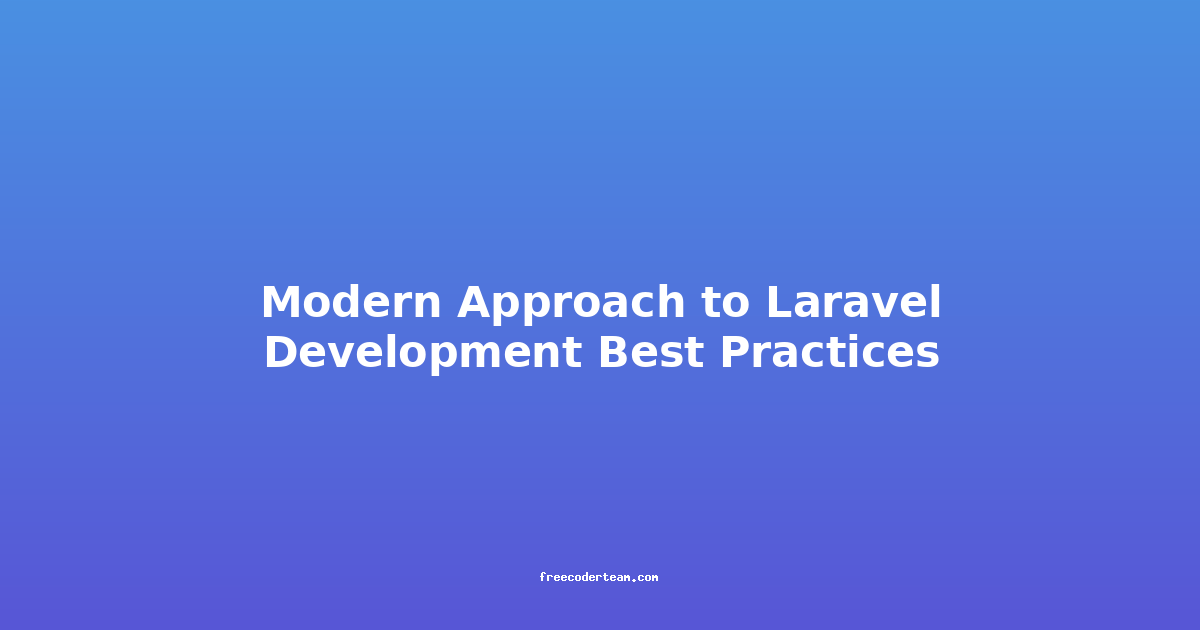Python Machine Learning Tutorial: In 2025
Machine learning (ML) has been one of the most transformative technologies of the 21st century, and its evolution shows no signs of slowing down. As we look ahead to 2025, the landscape of machine learning is expected to be even more advanced, with new tools, techniques, and best practices emerging. In this tutorial, we will explore how Python, the go-to language for ML, will continue to evolve and empower developers and data scientists to build sophisticated models. We'll cover key concepts, practical examples, and actionable insights to help you stay ahead in the rapidly changing world of machine learning.
Table of Contents
- Introduction to Python in Machine Learning
- Key Trends in Machine Learning by 2025
- Setting Up Your Machine Learning Environment
- Practical Example: Building a Machine Learning Model
- Best Practices for Machine Learning in 2025
- Actionable Insights for the Future
- Conclusion
Introduction to Python in Machine Learning
Python has been the de facto language for machine learning due to its simplicity, extensive libraries, and strong community support. By 2025, Python will continue to dominate the ML space, with improvements in performance, scalability, and ease of use. Libraries like scikit-learn, TensorFlow, PyTorch, and Keras will evolve to support more complex tasks, such as autonomous learning, explainable AI (XAI), and federated learning.
Python's strength lies in its ability to bridge the gap between research and production. Whether you're a beginner or an experienced practitioner, Python provides a seamless path to building, deploying, and maintaining machine learning models.
Key Trends in Machine Learning by 2025
1. Explainable AI (XAI)
By 2025, there will be a growing emphasis on explainable AI, as industries demand transparency in decision-making processes. Tools like SHAP (SHapley Additive exPlanations) and LIME (Local Interpretable Model-agnostic Explanations) will become even more sophisticated, helping data scientists understand how models make predictions.
2. Federated Learning
Federated learning will gain traction as organizations seek to train models on decentralized data without compromising privacy. Libraries like TensorFlow Federated will evolve to support more complex use cases, such as healthcare and finance.
3. AutoML (Automated Machine Learning)
Automated machine learning tools will mature, allowing non-experts to build and deploy models with minimal coding. Platforms like Google AutoML, H2O.ai, and TPOT will become more accessible and powerful.
4. Edge Computing and ML
With the rise of IoT devices, machine learning models will increasingly be deployed at the edge. Python libraries like TensorFlow Lite and ONNX Runtime will enable efficient model inference on resource-constrained devices.
5. Quantum Machine Learning
While still in its infancy, quantum computing will begin to influence machine learning by 2025. Libraries like Qiskit and TensorFlow Quantum will explore how quantum algorithms can accelerate ML tasks.
Setting Up Your Machine Learning Environment
Before diving into machine learning, you need a robust Python environment. Here's how to set it up:
1. Install Python
Ensure you have Python 3.9 or later installed. You can download it from the official Python website.
2. Use a Virtual Environment
Create a virtual environment to manage dependencies:
python -m venv ml_env
source ml_env/bin/activate # On Windows: ml_env\Scripts\activate
3. Install Essential Libraries
Install the following libraries using pip:
pip install numpy pandas scikit-learn tensorflow keras matplotlib seaborn
4. Optional: GPU Support
For deep learning tasks, consider installing TensorFlow with GPU support:
pip install tensorflow-gpu
Ensure you have the appropriate NVIDIA drivers and CUDA toolkit installed.
Practical Example: Building a Machine Learning Model
Let's build a simple machine learning model to predict housing prices using the scikit-learn library.
1. Import Libraries
import numpy as np
import pandas as pd
from sklearn.model_selection import train_test_split
from sklearn.linear_model import LinearRegression
from sklearn.metrics import mean_squared_error, r2_score
from sklearn.datasets import load_boston
2. Load and Explore the Dataset
We'll use the Boston Housing dataset, which is included in scikit-learn.
# Load the dataset
boston = load_boston()
data = pd.DataFrame(boston.data, columns=boston.feature_names)
data['PRICE'] = boston.target
# Display the first few rows
print(data.head())
3. Prepare the Data
Split the data into features (X) and target (y), and then into training and testing sets.
X = data.drop('PRICE', axis=1)
y = data['PRICE']
# Split the data
X_train, X_test, y_train, y_test = train_test_split(X, y, test_size=0.2, random_state=42)
4. Build and Train the Model
We'll use a simple linear regression model.
# Initialize the model
model = LinearRegression()
# Train the model
model.fit(X_train, y_train)
5. Evaluate the Model
Make predictions and evaluate the model using metrics like RMSE and R².
# Make predictions
y_pred = model.predict(X_test)
# Evaluate the model
mse = mean_squared_error(y_test, y_pred)
rmse = np.sqrt(mse)
r2 = r2_score(y_test, y_pred)
print(f"Root Mean Squared Error: {rmse:.2f}")
print(f"R² Score: {r2:.2f}")
6. Interpret the Results
The LinearRegression model provides coefficients that indicate the impact of each feature on the target variable.
# Display coefficients
coefficients = pd.DataFrame(model.coef_, X.columns, columns=['Coefficient'])
print(coefficients)
Best Practices for Machine Learning in 2025
1. Data Quality Over Quantity
By 2025, the focus will shift from "big data" to "good data." Ensure your data is clean, well-labeled, and representative of the problem you're solving.
2. Adopt MLOps
Machine Learning Operations (MLOps) will become essential for deploying and maintaining models in production. Tools like MLflow, DVC, and Kubeflow will help streamline the ML lifecycle.
3. Leverage Pre-trained Models
Instead of training models from scratch, leverage pre-trained models (e.g., BERT, ResNet) and fine-tune them for your specific use case. This approach saves time and computational resources.
4. Focus on Model Interpretability
As regulations around AI transparency grow, focus on building interpretable models. Use techniques like SHAP and LIME to explain model predictions.
5. Monitor and Update Models
Machine learning models degrade over time due to concept drift. Implement monitoring systems to detect performance degradation and retrain models as needed.
Actionable Insights for the Future
1. Stay Updated with New Libraries
Keep an eye on emerging libraries and frameworks. For example, Ray and Dask are gaining popularity for distributed computing, which will be crucial for handling large-scale datasets.
2. Invest in Cloud Services
Cloud platforms like Google Cloud AI, AWS SageMaker, and Azure Machine Learning will offer more advanced services for model training, deployment, and monitoring. Leverage these platforms to scale your ML projects.
3. Prioritize Ethical AI
As AI becomes more integrated into society, ethical considerations will be paramount. Ensure your models are fair, unbiased, and transparent.
4. Learn Transfer Learning
Transfer learning will become even more prevalent. By 2025, most machine learning tasks will involve fine-tuning pre-trained models rather than training from scratch.
Conclusion
Python will remain the cornerstone of machine learning in 2025, with advancements in libraries, tools, and best practices. By embracing trends like explainable AI, federated learning, and AutoML, you can build more robust and ethical models. Whether you're a beginner or an experienced practitioner, staying curious and adaptable will be key to thriving in the evolving world of machine learning.
Remember, machine learning is not just about building models—it's about solving real-world problems. Keep experimenting, learning, and applying your skills to make a meaningful impact.
Stay tuned for more tutorials and insights on machine learning in the future! 🚀
Happy coding!




